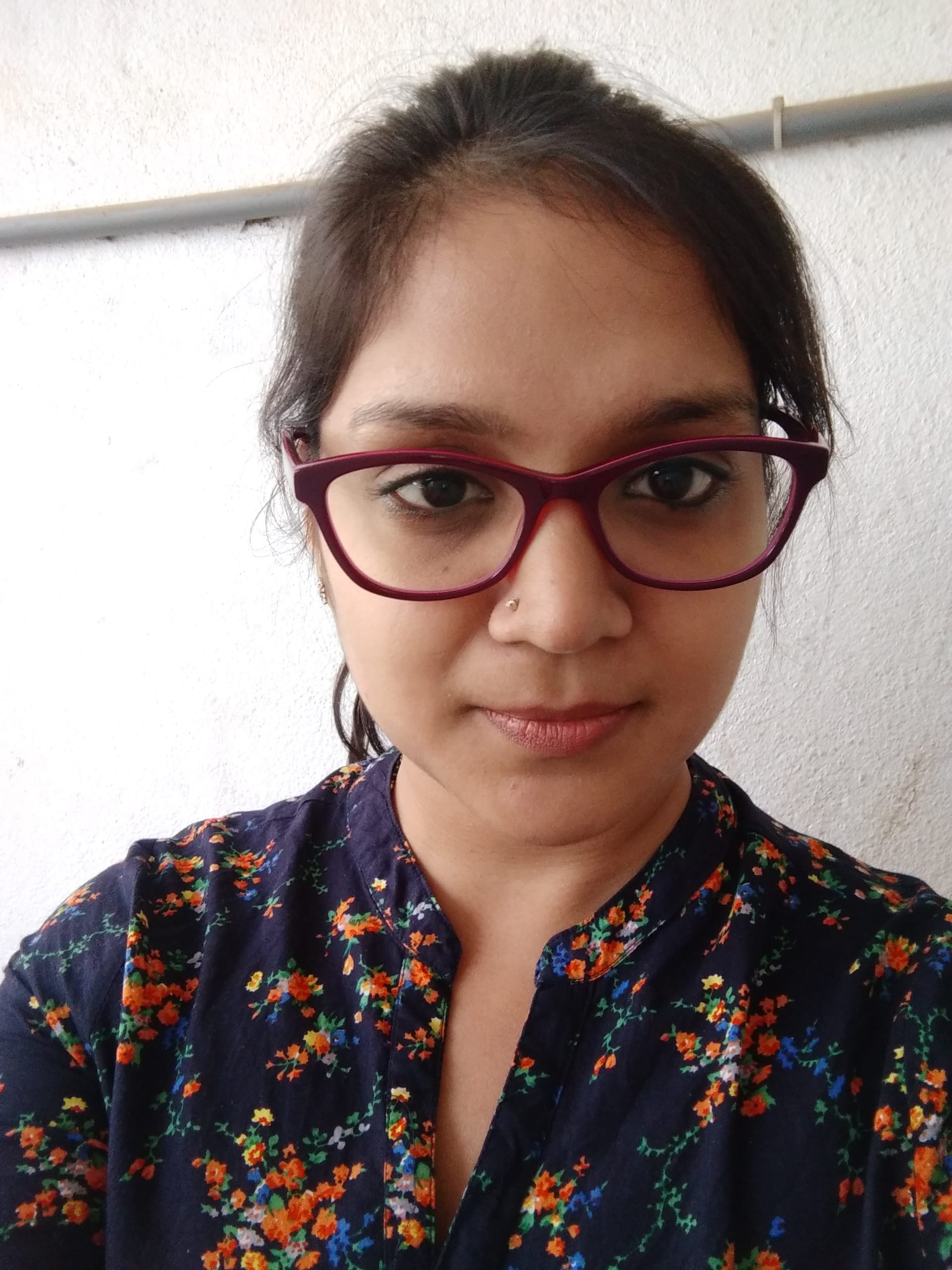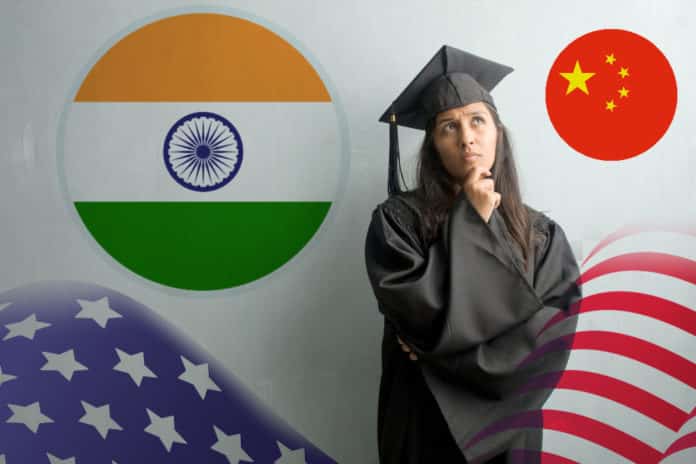Are Indian Ph.D. Scholars Inferior to their American & Chinese Counterparts?
Getting a Ph.D. is not a kids play. It demands time, patience, hard work, and determination, overall it is a big challenge. Still and all it is a worthwhile opportunity to receive higher and some extra education, making you more eligible and competitive in the world of jobs.
Due to the changing socio-economic culture, students all over the world are becoming responsive by seeking academic and research opportunities, and consequently finding astonishing success in all the fields ranging from chemistry to economics and to the various science & humanities fields. Essentially, a Ph.D. scholar should himself take the decision of pursuing this degree since it is full of both possibilities as well as failure, no matter where you go. It is a long-term research project and one must be completely motivated to take up and commit to this challenge. n>
While pondering over the options and comparing the opportunities in different parts of the world one should consider the matter of funding, research demands, and timing, and see how the degrees matches.
If we look at the Indian higher education system, we will see that it has expanded at a phenomenal rate during the last decade and shows no sign of stopping. There is a rapid production in the number of Ph.D. research opportunities due to huge growth in the number of individual universities, producing cutting-edge Science and Engineering projects to unique programmes exploring the country’s own diverse history and culture. Going to the U.S., on the other hand, gives several flexible benefits to prospective students who are looking for a home for their research.
Scholars are hence encouraged to consider each of their pros and cons and think what kind of experience they want as a Ph.D. candidate.
A qualitative look at Ph.D. in India: Highlights and Trends
According to a recent report released by Organisation for Economic Cooperation and Development (OECD), India stands tall on the fourth rank with slightly over 24,000 doctoral graduates being produced on a yearly basis. The USA tops the list with a production of 68,000 doctoral scholars. Among the emerging economies, India is the only country which has been featured in the list at such high ranking making it even more commendable.
Also across various disciplines, Indians are swarming to the top echelons of higher learning, especially in the US. This ‘proliferation’ of Indian-origin academics heading top academic institutions in the US is not a new phenomenon. The list of these supremely talented and accomplished academicians has been growing for a decade. But India does not offer enough to these fertile, imaginative minds to hold them back in their own country. The crème of the talent pool from India go to the US and pursue their PhDs. These academic toppers naturally become successful— in the industry and in academia. On the contrary Indian scholars are inadequately skilled for jobs. IITs, IISc, TIFR, and a few more top institutes have surely impressed the world but a large number of scholars from lesser known universities and colleges are not even employable, let alone their comparison with their counterparts from advanced countries.
Most of the doctorates that are produced are mostly from the field of Science, Technology, Engineering, and Mathematics. With more and more universities opening for PhDs the number of students applying for research is growing but the quality of research is going down.
It is not the students who are to be blamed for this but the universities and colleges which often lack even required infrastructure and facilities.
A zoology professor of Osmania University, Prof. C Srinivasulu said that a trend of competitive production of research can be seen in Telangana but without a focus on quality. He added that universities work culture should be of international standard and they should stop focusing on the number of Ph.D. scholars. At the same time, special incentives have to be provided to research students to keep them encouraged.
Shashi Deshmukh, an English Professor remarked that most of the research in India is based on digging up of old theories and concentrating on them leading to a lack of innovative idea and research. He said, that to have innovative research there should be stimulation at the beginning-level itself. But this does not happen due to inadequate budgets and scholarships for scholars which affects the ideation stage where they can start thinking on a larger scale. Even students who are having permanent scholarships complain due to delayed stipends and lack of research guidance in universities. Funds are being cut by the UGC and Centre for scholars which will all result in problems in government institutions which means that eventually, only private universities will remain. Also, the student guide ratio is uninviting in many universities, leading to dropouts. He also questioned the facilities and infrastructure here. Scholars are bound to share equipment and infrastructure which lengthens the process of research.
When asked to educational experts they suggest graduates need more innovative research as well as the existing mode of financial support provided to them also needs to undergo a change. They question the demand for quality when students are not getting the facilities required for the same. They have also stressed the importance of exposure to the industry which can provide increased training to research scholars. This report was not based on the study of numbers per head of the population. If it would have been done that way then there would be more changes in countries like India having a larger headcount than many countries.
The stipend received is pretty low when compared to US scholars. Also, the research facilities are not updated and still lack technologies. Research is more theoretical-based with very few new ideas as a result research output is relatively less in terms of publications.
Besides these drawbacks that Indian scholars have to face, here are a few reasons to consider doing your Ph.D. at an Indian university:
- Assortment – the scope of options for Ph.D. study in India are diverse providing you almost certainly an excellent programme suitable for you.
- Affordability – Ph.D. fees in India can vary a lot but are surprisingly low.
- Increasing global recognition – India’s higher education expansion has made way for several of India’s leading universities and institutes to feature in various international university rankings.
- Youth – Demographically, India’s current population is one of the youngest in the world giving rise to a crisp and vigorous outlook that helps drive innovation and entrepreneurialism. This will make you a right fit as a Ph.D. researcher searching for new ideas and approaches.
Ph.D. in China
China has opened numerous options for its scholars at home itself. They have pumped enormous resources into its graduate education capacity across thousands of universities for the Chinese students. Professors at these universities return after training from the US and Europe in large proportion. And once back, they implement US research practices i.e. they try and teach, publish as well as operate laboratories like they do in the western part of the world. Adding to it is the rapid growth of the Chinese economy which has created a great need for scientific talent. This need makes most Chinese students feel that an investment in a U.S. degree is not worth it and to develop a career in China itself. At the same time, the added value of a U.S. graduate degree has dwindled in relation to a comparable Chinese degree. Obviously, that’s not true for institutes like MIT (the Massachusetts Institute of Technology) or University of California, or various other top institutes of course—those degrees still carry a premium in the job market.
Ph.D. in the US
US universities are well known for their excellent research facilities. Better say they are far ahead in research of most other countries in the world which is proven by the highest number of research papers being published from the US. And this becomes possible because of the motivated researchers there who receive immense support in the form of facilities or funding for research. Also getting a job of one’s choice after Ph.D. is not tough due to the very strong industry-academia linkage. Industries fund a lot of scientific research. For scholars interested in working with industry, good job security is provided by a Ph.D. degree from the US as there are many successful industries in the US. And even if one wishes to return to India the best option is to get in academics where institutes like IITs, NITs or other good colleges offer good opportunities. Consequently getting admitted into a US university to pursue Ph.D. has become a dream for many students. The value employers place on international experience whether it is academics or industry is another great pull for students.
Unlike in China, in India, very little effort has been made to upgrade and change the quality and infrastructure of the facility. In spite of all this, academics of Indian origin have gone through an evolutionary curve of their own. The number of Indian students getting a degree from a foreign university has turned progressively favorable just because of the better facilities there. In the previous generation, they focused on being excellent scholars and teachers, and never did they think that academic leadership would be entrusted to them. Over the past 10 years or so, Indian scholars have realized that they are good at institution building too and are willing to compete for leadership positions.
Indian scholars are not only ahead in technical talent but also have the advantage over immigrants from other nationalities of being fluent in English. English comes quite naturally to Indians, which positions them well for high positions. Whether it is academic or industry leadership position, both call for an amalgam of skills— technical, managerial and administrative, communication, team-work, and patience. Indians have the ability to work with others and fit in well with the global community they live in.
The credit of all this goes to the fact that most of the Indians grow up in a multicultural and multilingual environment, and hence dealing with diversity comes easily. Also coming from modest backgrounds where they learn the virtues of hard work and diligence at an early age helps them to fit in easily. Along with their academic credentials, Indian academicians bring a valuable global and multicultural perspective. This is another quality which makes them very attractive for top US institutions, which are in the quest of both academic excellence and an open leadership mindset.
Conclusion
A Ph.D. can be done anywhere in the world because of no matter what it will always be considered the highest degree level worldwide. Its fame adds credentials to one’s CV making it stand out and also making you the smartest person at the family gathering.
However, whether you pursue your Ph.D. in India or USA or China, is not necessarily the same in these different parts of the world. Besides the obvious differences like the duration, the funding structure, and the requirements for Ph.D. candidates in different parts of the globe, the major factors to consider are infrastructure and future opportunities. Depending on your long-term goals, you can take a call where you want to study.
The USA has come out on top time and time again, is the top graduate destination and the most popular among graduate students all over the world, and it’s not hard to see why. The first major attraction is the wide range of institutions – there are over 1,700 – which offer Ph.D. degrees every year with a wide range of choice and flexibility. It is home to almost 75% of the top 20 institutions in the world. The second reason for the great pull is the quality of these US institutions.
Going to the U.S. for a Ph.D. definitely offers a unique set of benefits. And depending on how you want to commit to Ph.D. and what you hope to achieve with your it, you may decide that going to the U.S. for your Ph.D. is a wise choice or not. But scholars of Indian origin whether they are doing Ph.D. in India or USA are equal in all aspects but one. The only difference lies in the institutions in various parts of the world which makes Indian Ph.D. scholars little behind from their counterparts.
How to Improve the research Scenario in India:
- Improve the current system of Filtration of Talent for research and Improvise CSIR NET & GATE exams to include better analytical
- Make Researcher an attractive career by increasing fellowships to up to 1,20,000/- per Month and giving better facilities to Researchers in terms of Lab Safety and Infrastructure and tax benefits
- Have a fixed 15 Year career ladder for all Ph.D.’s who achieve a set target given by DST & DBT
- Reward Ph.D. Students who come up with the best research during their Ph.D. coursework
- Encourage Ph.D. Students to convert their Research work into Commercial projects and sell to corporates.
 She is a passionate reader and rapidly identifies research opportunities and job market trends in her field. She keeps a track of biotech ventures emerging and loves to know more about them. She is an inspiration to her students who under her guidance, have developed the habit of unwinding the mysteries of chemistry.
She is a passionate reader and rapidly identifies research opportunities and job market trends in her field. She keeps a track of biotech ventures emerging and loves to know more about them. She is an inspiration to her students who under her guidance, have developed the habit of unwinding the mysteries of chemistry.































Nice article. I would like to add a point here. I see that in China, every research institution invests lots money in inviting (from 2 months to one year) top foreign scientists (including from India) in specific filed to interact with masters and Phd students. So, the students have opportunity to interact with the world topmost scientists specialized in their field of research.
Postdoc in China
Hi can you please mail me your email id. I am from India. I have been trying to apply for Phd in China. I would like to talk to you about it. Hope you will reply.
thank you